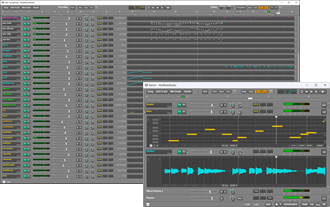- Windows Startup Wav Files Converter
- Windows Startup Wav Files Free
- Windows 2000 Startup Sound Wav
- Windows Startup Sound Wav File
WAV files can be opened with Windows Media Player, VLC, iTunes, Groove Music, Winamp, Clementine, XMMS, and very likely some other popular media player applications as well. Pdf to wordpress converter. In some cases, the DTS audio codec is used to create a DTS-WAV file that uses the.WAV extension. If that's what you have, try using foobar2000 to open it.
File: Windows Startup WAV Sound Effect Details: Windows Startup Sounds Format:.WAV License: Personal Use Only Category: Sound Effect. Here are the sounds that have been tagged with Windows free from SoundBible.com Please bookmark us Ctrl+D and come back soon for updates! All files are available in both Wav and MP3 formats. Free WAV Sound Files In this section, we offer a roundup of the Web's top resources for WAV files. The sites listed below offer WAV files in many categories including movies, TV, humor, computer event sounds, E-mail WAVs, sound effects, WAV loops, Flash animation WAV files, and more. Explore the collection of startup and shutdown sounds used in various versions of Windows operating systems. This application also has startup and shutdown sounds from unreleased versions of Windows, including Windows NT 5.0 beta and Windows Longhorn! Get great insight and fun facts on various sounds from the 'Did you Know' boxes. The windows sound path is: C: Windows Media. The sound I need to find ISNOT the file 'Windows Startup.wav' in that folder. I remember one time I found this file and I can copy it to the folder of windows 8.1 (the same laptop with my windows 7) and replace it for the original of windows 8.1. After that my Windows 8.1 runs startup sound of windows 7.
By default, Windows 7 uses a sound for some of your computer's activities, called 'system sounds' - when Windows starts, for example, it makes a sound, and the same holds true when you plug or unplug new hardware, receive a new email, lock your PC, etc. But where is the system sound folder that contains all these sound files? This tutorial answers the question about this system folder location, and clarifies some confusion about the role of the sound folder, or 'Media' folder, as it is actually called.
Locate the system sounds folder in Windows 7

Windows Startup Wav Files Converter
Here are easy steps to follow to open the sound folder in Windows Explorer:
- Click on the start menu to enter a 'path' (the location of the sound folder)
- In the search field, type 'C:windowsmedia', and hit Enter: this is the path (location) of Windows 7's sound folder, and hitting Enter will open it in Windows Explorer.
- You can now see all the default and custom sounds (files and folders) that Windows 7 uses for even audio feedback; (note that this is the same directory you see when you customize Windows sounds, and click 'Browse' to choose a sound file for an event).
- To preview any of these system sounds, just double-click on any of the sound files: most of them are '
WAV' files, but you'll also find some 'MID' audio files. Windows 7 will open the file in your default audio player for these two sound file types (which should be Windows Media Player, unless another program has been installed and set as default player instead).
Adding custom sound files to the Media folder
Note that while the system sounds are located in a special, operating system folder (the Media folder), you can still add your own sound files to the folder's content, and use them as Windows event sounds - just keep in mind that Windows 7 will only let you pick WAV files as system sounds. (You can do an online search to find MP3 to WAV converters, if needed.) Coby digital photo keychain software download.
Tip: Now that you know exactly where the Windows sounds folder is located, here is a quicker way to open your Media folder in the future: hold down the Windows logo key and press 'R' to open the 'Run' dialog. Then, type 'media' inside the text field, and hit Enter: Windows 7 will directly open the sound folder in Windows Explorer!
Windows Startup Wav Files Free
Note of caution with system folders (like the Media sound folder)
Windows 2000 Startup Sound Wav
The location of the sound folder is the same for all users, which implies two things: first, all user profiles use the same group of sound files; second, if you move or delete a sound file, it will be unavailable to all Windows users sharing your computer.